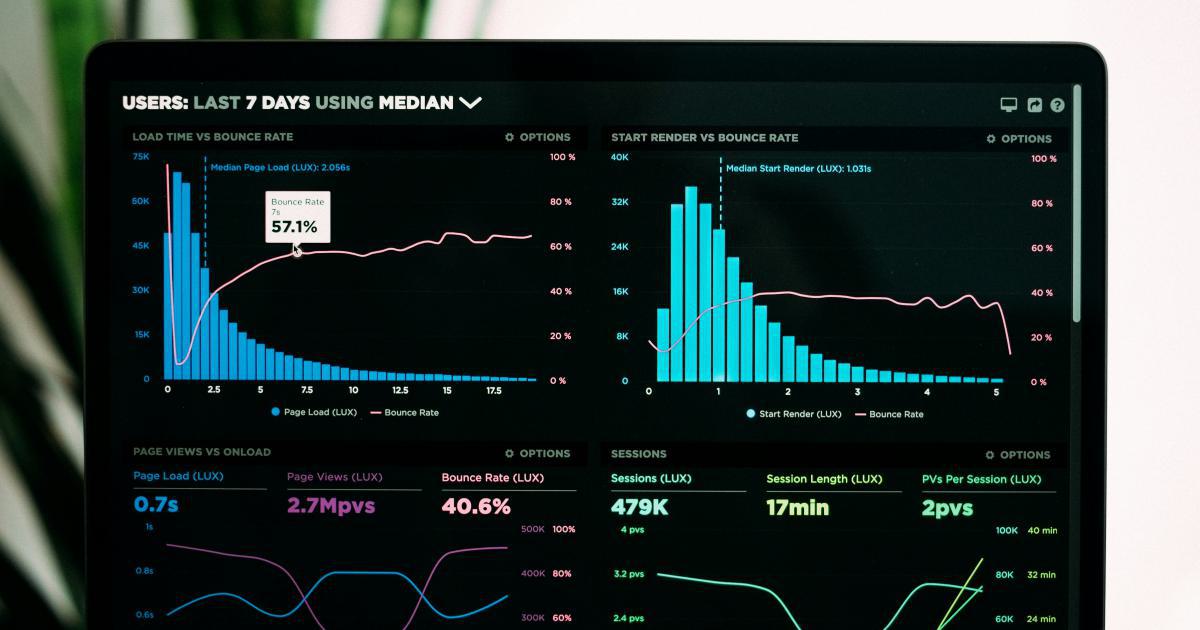How to Analyze Trading Data with Quantitative Models

Quantitative models have revolutionized the way financial professionals analyze trading data. In the world of finance, the ability to analyze trading data is crucial for making informed decisions in fast-paced markets. By leveraging mathematical models, statistical techniques, and computational algorithms, traders and analysts are empowered to dissect complex datasets, identify hidden patterns, and forecast market trends with greater precision. This article delves deep into the methodologies, challenges, and best practices for analyzing trading data using quantitative models, offering comprehensive insights and actionable strategies for both novices and experts in the field.
Introduction to Quantitative Models in Trading
In recent decades, quantitative models have become synonymous with modern financial analysis. Today, institutions ranging from hedge funds to proprietary trading firms rely heavily on quantitative methods to drive investment decisions. These models are built on complex statistical theories, theoretical finance ideas, and even machine learning algorithms. While the foundational concepts have been around for decades, advancements in computer power and data availability have significantly enhanced their effectiveness.
Quantitative analysis is not merely about number crunching—it is about understanding market dynamics through rigorous scientific methods. When you learn how to analyze trading data with quantitative models, you are equipping yourself with tools that can parse through vast amounts of financial information, differentiate between genuine trends and statistical noise, and ultimately drive profit-making strategies.
In this article, we will explore the entire lifecycle of trading data analysis: starting from data gathering and cleaning, moving on to model selection and statistical analysis, and culminating in the evaluation of model performance with real-world examples. Our objective is to provide you with a detailed roadmap that will enable you to adopt and optimize quantitative models effectively.
Overview of Quantitative Models for Trading Data Analysis
Quantitative models in trading are essentially mathematical representations of market behaviors. They integrate historical price data, volume metrics, and even macroeconomic indicators to create frameworks that help predict future movements. Traditionally, these models could be grouped into several categories including deterministic and stochastic models, each possessing unique strengths and limitations.
Many quantitative models are built around the concept of risk and return. For example, the Capital Asset Pricing Model (CAPM) laid the groundwork for modern portfolio theory by linking the expected return of an asset to its risk relative to a market benchmark. Today, more sophisticated models extend these foundational ideas to capture non-linear relationships, incorporate volatility clustering, and even integrate sentiment analysis derived from news feeds and social media.
A significant advantage of these models is their ability to operate on a hypothesis-driven approach. Analysts usually start with market assumptions or hypotheses, which are then tested against historical data. The iterative process of hypothesis testing helps in refining models and making them more robust over time. Furthermore, the flexibility of quantitative models allows the integration of different types of data—ranging from high-frequency tick data to long-term macroeconomic trends.
The Evolution of Quantitative Trading Models
The past few decades have witnessed a paradigm shift in the field of quantitative trading. Where once simple moving averages and basic statistical analysis were the norm, today's models incorporate advanced machine learning techniques and big data analytics. For instance, support vector machines and neural networks are now commonly used to decipher non-linear market patterns that were previously obscure to traditional methods.
Moreover, the democratization of financial data and the advent of cloud computing have leveled the playing field. Individual traders and smaller institutions now have access to the same computing power and datasets as large financial conglomerates, allowing them to build and test sophisticated models on a limited budget.
Quantitative models continue to evolve, fueled by innovations in computational methods and a deeper understanding of market microstructures. These trends suggest that the future of trading will be increasingly driven by models capable of processing massive amounts of data, adjusting to market anomalies, and learning from emerging financial phenomena.

Data Preparation and Cleaning
Before delving into model construction and analysis, it is imperative to prepare the trading data appropriately. Data cleaning and preprocessing form the backbone of any quantitative analysis. In many cases, the accuracy and reliability of your predictive models are only as good as the data you feed into them. Data preparation encompasses several key steps—data collection, handling missing values, normalization, and filtering out noise.
Data Collection and Integration
A variety of sources contribute to a robust trading dataset. These include historical market data providers, real-time feeds from exchanges, and even alternative data sources like satellite imagery or social media sentiment. A comprehensive dataset enables you to capture a multifaceted view of the market dynamics, which is essential for effective model building.
When collecting data, it is important to integrate different data sources seamlessly. For instance, price data might come in one format from an exchange while economic indicators could be available in another format from a government database. Data integration involves standardizing these disparate datasets into a unified structure that can be easily processed by your quantitative models.
Handling Missing and Inconsistent Data
Missing data points are common in real-world datasets, and their presence can significantly skew your analytical results. Techniques for handling missing data include imputation methods, such as filling in missing values with the mean or median of surrounding data, or using algorithms that are robust to missing inputs. It is critical to assess whether the missing data is random or systematic, as the latter can bias your analysis and lead to incorrect inferences.
Consistency checks, such as verifying timestamp alignment across datasets and ensuring no duplicates exist, are also a vital component of the data cleaning process. These steps ensure that your analysis is built on solid, error-free data.
Normalization and Noise Reduction
Normalization is the process of adjusting values measured on different scales to a common scale, thereby preventing variables with larger ranges from unduly influencing your model. Common normalization techniques include min-max scaling and z-score standardization, each serving different analytical needs.
Data smoothing and noise reduction are essential when dealing with high-frequency trading data. Techniques such as moving averages, exponential smoothing, and even more advanced signal processing methods help to reduce random fluctuations and highlight the genuine underlying trends in the data.
These preprocessing steps are critical for transforming raw trading data into a format that is conducive to robust analysis. High-quality, clean data not only improves the accuracy of your quantitative models but also enhances the interpretability of the analytical results.
Statistical Techniques and Machine Learning Approaches
The quantitative analysis of trading data employs a variety of statistical techniques and machine learning methods. These methods help in identifying relationships between variables, forecasting trends, and uncovering patterns that may not be immediately visible through traditional analysis.
Classical Statistical Techniques
Classical statistical methods remain the foundation upon which many predictive models are built. Techniques such as regression analysis, time series analysis, and hypothesis testing have long been used to explore financial relationships. For example, linear regression can be instrumental in relating asset returns to various market factors, providing insights into how different variables contribute to overall performance.
Time series analysis, particularly using autoregressive integrated moving average (ARIMA) models, is often used to forecast future price movements based on historical data patterns. These models capture seasonality, trends, and cyclic behaviors in financial datasets, making them invaluable for short- and medium-term forecasting.
Another important statistical method is cointegration analysis, which tests for long-term equilibrium relationships between different financial instruments. This technique is critical in pairs trading strategies, where traders seek to profit from temporary deviations from a long-term relationship.
Machine Learning Approaches
In recent years, machine learning has emerged as a powerful tool for analyzing trading data. Algorithms such as decision trees, random forests, and neural networks have been applied to predict market trends and identify anomalies. These models can parse through large volumes of data and capture non-linear relationships that are often missed by traditional statistical methods.
Neural networks, in particular, have gained significant popularity in the financial sector. They have the capacity to model complex patterns in trading data, learning adaptive features that can predict market turning points. Convolutional Neural Networks (CNNs) and Recurrent Neural Networks (RNNs) are often used to capture both spatial patterns in technical indicators and sequential dependencies in time-series data.
Support vector machines (SVM) and ensemble methods are also in wide use due to their robustness in handling noisy data and their ability to generalize well on unseen data. These methods can be particularly effective when combined with classical statistical techniques, often resulting in hybrid models that leverage the strengths of both approaches.
Feature Engineering and Model Evaluation
Feature engineering is the process of identifying and creating the most predictive variables out of raw trading data. Features such as moving averages, volatility measures, and momentum indicators are often derived from price data. The selection of appropriate features is one of the most critical steps in the modeling process because it determines the information that the machine learning model will use to learn from the data.
Evaluating the performance of these models requires a careful balance between back-testing on historical data and using cross-validation techniques to avoid overfitting. Common performance metrics include Mean Absolute Error (MAE), Root Mean Squared Error (RMSE), and various classification accuracy measures for categorical predictions. By systematically evaluating model performance, analysts can refine their models and improve their predictive power.

Real-World Applications and Case Studies
Quantitative models are not just theoretical constructs—they have meaningful real-world applications that impact millions of dollars in capital markets every day. By examining specific case studies, we can better understand how these models are applied and what makes them succeed in dynamic trading environments.
Case Study 1: High-Frequency Trading
High-frequency trading (HFT) is perhaps one of the most well-known applications of quantitative models in finance. Here, sophisticated algorithms execute thousands of trades per second, exploiting minute price discrepancies that exist only for fleeting moments. The models governing HFT require extremely fast data processing and ultra-low latency to detect and capitalize on these opportunities.
In one notable case, a proprietary trading firm used a high-frequency trading model based on market microstructure analysis. By analyzing order book dynamics and trade execution times, the firm was able to optimize trade entry and exit points, significantly reducing market risk and slippage. Back-testing demonstrated that the model consistently delivered superior returns compared to traditional discretionary trading, validating the importance of accurate quantitative analysis in HFT environments.
Case Study 2: Algorithmic Portfolio Management
Another compelling example is algorithmic portfolio management, where quantitative models are used to automatically manage a portfolio’s asset allocation in response to changing market conditions. In this scenario, models are calibrated to assess risk-adjusted returns and to rebalance portfolios periodically. One asset management company employed a dynamic asset allocation model that integrated macroeconomic indicators, technical indicators, and sentiment analysis derived from news feeds. The model was able to detect early signs of market downturns, allowing the firm to adjust its holdings proactively and mitigate losses during volatile periods.
Case Study 3: Risk Management and Hedging Strategies
Risk management remains a critical area where quantitative models excel. Volatility forecasting and stress testing are integral components of risk management frameworks. By running simulations through various market stress scenarios, risk managers can determine the potential impact of adverse market movements on their portfolios. In one practical application, a multinational bank used quantitative models to assess the Value at Risk (VaR) of its trading book. The model not only provided a clear picture of potential financial losses but also helped the bank design effective hedging strategies using derivatives to mitigate these risks.
Integrating Real-Time Data in Model Execution
Integrating real-time data streams into these models further enhances their effectiveness. Real-time analytics empower traders to make decisions based on the most current market conditions. By combining historical data with live feeds, quantitative models can dynamically adjust parameters and trigger trades that align with evolving market realities. This real-time integration is a defining factor in the success of many quantitative trading strategies.

Step-by-Step Guide to Building a Quantitative Trading Model
Developing a quantitative trading model from scratch can seem daunting, but it is a systematic process that follows several actionable steps. Below is a detailed roadmap to help you construct your own model:
Step 1: Define Your Objective
Start with a clear definition of what you want to achieve from your model. Objectives may include forecasting asset prices, optimizing portfolio allocations, or managing risk through hedging strategies. A well-defined objective will help narrow down the type of model and data needed, as well as the performance metrics for evaluating success.
Step 2: Gather and Prepare Data
As detailed earlier, data collection and cleaning are critical. Identify primary data sources, which may be historical market data, economic indicators, or alternative datasets. Ensure that the gathered data is cleaned, normalized, and free of significant errors or inconsistencies. Document every step of your data preparation process for transparency.
Step 3: Feature Engineering
Identify potential features that could improve model accuracy. These could include technical indicators like moving averages, relative strength index (RSI), Bollinger Bands, and other momentum or volatility indicators. Experiment with combinations of features to see which ones provide the most predictive power.
Step 4: Choose the Modeling Approach
Decide whether a classical statistical model, a machine learning algorithm, or a hybrid approach best suits your objective. For simpler relationships, regression analysis may suffice, whereas complex and nonlinear market behaviors may require neural networks or ensemble methods. Consider using a combination of both if your data exhibits multifaceted behavior.
Step 5: Model Training and Validation
Split your data into training and testing sets. Use the training set to calibrate your model and the testing set to evaluate its performance. Employ cross-validation to ensure that your model generalizes well to unseen data. Utilize metrics like MAE, RMSE, or cumulative returns over a given period to assess the efficacy of your model.
Step 6: Back-Testing
Back-test your model using historical data to simulate trading performance over past market cycles. This step is critical for identifying potential pitfalls such as overfitting, data snooping biases, or unaccounted risks in your strategy. Analyze back-test results and refine your model accordingly.
Step 7: Implement and Monitor
After successful back-testing, deploy your model in a live or paper trading environment. Monitor performance continuously, and make adjustments as needed. Real-time monitoring helps in promptly capturing any deviations from expected behavior, ensuring that the model remains robust under changing market conditions.
Step 8: Iterate and Improve
Quantitative models must evolve with market conditions. Continuously refine your model by incorporating new data, updating features, and experimenting with alternative algorithms. Regular model reviews and performance audits are essential to maintain trust and accuracy in your quantitative strategies.

Challenges and Considerations in Trading Data Analysis
Despite the sophistication of quantitative models, several challenges must be addressed to ensure their effective implementation in real-world trading scenarios.
Data Quality and Volume
The sheer volume of data that financial markets generate poses its own set of challenges. High-frequency trading data can quickly become overwhelming, and maintaining data quality is paramount. Data errors, missing values, or corrupt timestamps can lead to flawed models and potentially disastrous trading decisions. It is essential to invest in robust data infrastructure and automated systems for real-time error detection and correction.
Overfitting and Model Robustness
One of the most cited pitfalls in quantitative modeling is overfitting—where a model performs exceptionally well on historical data but poorly on new, unseen data. Overfitting can result from overly complex models, lack of proper cross-validation, or the inclusion of too many irrelevant features. Strategies to mitigate overfitting include regularization techniques, simpler model architectures, and thorough cross-validation across multiple market regimes.
Market Regime Changes
Financial markets are not static; they continuously evolve in response to economic, political, and social changes. Models calibrated during a particular market regime might fail when conditions change drastically. Therefore, adaptive models that can recalibrate themselves in response to shifts in market conditions are highly desirable. Continuous research and development are vital to ensure that models remain applicable in dynamic market environments.
Computational Limitations and Latency
High-frequency trading algorithms, in particular, face challenges related to computational power and latency. Even small delays in data transmission or processing can have significant implications for trade execution. Investing in high-performance computing resources and optimizing code for efficiency are essential steps in minimizing latency-related issues.
Regulatory and Ethical Considerations
As with any technology-driven finance approach, quantitative models must adhere to strict regulatory standards. Ensuring transparency in model assumptions, maintaining accurate documentation, and regularly auditing model performance are key aspects of modern quantitative risk management. Additionally, ethical considerations—such as avoiding market manipulation or inequitable trading practices—must be woven into the fabric of model development and deployment.
Future Trends and Innovations in Quantitative Trading Models
The field of quantitative trading is in a constant state of evolution. Emerging technologies, such as artificial intelligence, blockchain, and quantum computing, are poised to redefine how trading data is analyzed in the coming years.
Deep Learning and AI Advancements
Deep learning has already begun to reshape trading algorithms. With architectures like Long Short-Term Memory (LSTM) networks and Transformer models, machine learning models are capable of decoding even the most intricate patterns in time series data. These models can learn from vast datasets, adjusting their parameters dynamically to improve prediction accuracy over time. As data availability and computational power continue to increase, deep learning models are expected to become even more integral to quantitative trading strategies.
Blockchain and Decentralized Finance
Blockchain technology has opened up new avenues for data transparency and security. In the trading landscape, blockchain can provide immutable records of transactions and asset ownership, bolstering the reliability of data inputs into quantitative models. Moreover, decentralized finance (DeFi) platforms have introduced novel asset classes and trading mechanisms that quantitative models need to incorporate. As these technologies mature, we can expect a fusion of traditional quantitative analysis with blockchain-driven innovations.
Quantum Computing Potential
Though still in its infancy, quantum computing promises to revolutionize computational tasks. For quantitative analysts, the potential to process complex calculations and massive datasets at unprecedented speeds is highly attractive. Quantum algorithms could solve optimization problems and perform risk assessments far more efficiently than current classical computers, potentially paving the way for a new era of quant trading.
Integration of Alternative Data Sources
The future of trading data analysis is not confined to price and volume data. Alternative data sources—ranging from satellite images tracking activity at key logistics hubs to sentiment data extracted from social media and news outlets—are becoming increasingly relevant. Incorporating these alternative data sources into existing quantitative models can provide a competitive edge by revealing hidden market insights before they become apparent through traditional channels.
The Role of Explainable AI
As models grow in complexity, the need for transparency and interpretability becomes more pressing. Explainable AI (XAI) is a trending research area that aims to make machine learning models more understandable by human analysts. In a regulated industry like finance, explainability is crucial for gaining stakeholder trust and ensuring that model decisions can be audited and validated.
Conclusion and Best Practices
The process of learning how to analyze trading data with quantitative models is a multifaceted journey that combines data science, statistical analysis, and domain expertise in finance. From data preparation to model deployment and continuous monitoring, every phase of this process plays a vital role in ensuring that the models perform reliably in real-world scenarios.
Key takeaways include the necessity of clean and integrated data, understanding the balance between model complexity and robustness, and the importance of adapting to evolving market conditions. Whether you are an individual trader or part of a larger financial institution, continuously iterating on your quantitative models in response to market feedback is crucial for long-term success.
Best practices in the field recommend maintaining a disciplined approach to hypothesis testing, regularly revisiting assumptions, and staying informed about the latest technological advances that may impact market dynamics. Embracing a culture of constant learning and adaptation, along with rigorous back-testing and real-time monitoring, will empower you to harness the full potential of quantitative model-based trading.
As markets continue to evolve, the interplay between data quality, statistical rigor, and machine learning innovation will remain at the forefront of successful trading strategies. By adopting quantitative models and continuously refining them, financial professionals can unlock valuable insights, mitigate risks, and ultimately secure a competitive advantage in an increasingly complex trading environment.
To conclude, the art and science of quantitative trading require a harmonious blend of analytical precision and creative problem-solving. Whether deploying a simple regression-based method or a sophisticated deep learning model, the ultimate goal remains the same: to distill vast amounts of trading data into actionable decisions. With a robust quantitative framework in place, the challenges of unpredictable markets can be met head-on, paving the way for more resilient and profitable trading strategies.
In summary, this comprehensive guide has outlined the essential components of quantitative trading—ranging from data preparation and statistical analysis to real-world applications and future trends. Armed with these insights, you can confidently set out on the journey to analyze trading data using quantitative models, leveraging cutting-edge techniques to improve decision-making and optimize performance in today’s dynamic financial markets.
As you venture into the realm of quantitative analysis, remember that the journey is iterative. Each model you build, test, and refine adds to your expertise and enhances your ability to navigate the multifaceted world of trading. Embrace innovation, rigorously validate your results, and remain adaptable to the ever-changing market environment.
Happy modeling and may your quantitative analyses lead to robust and profitable trading decisions!
Unlock Your Trading Potential with Edgewonk
Struggling to improve your trading performance? Edgewonk's advanced analytics tools are designed to give you the edge you need.
With detailed trade journaling, robust strategy analysis, and psychological insights, you'll gain a comprehensive understanding of your strengths and weaknesses. Don't miss out on this game-changing opportunity.
Unlock Your Trading Potential with Edgewonk
Struggling to consistently achieve profitable trades? Edgewonk's cutting-edge analytics empower you to analyze your performance and refine your strategies.
Our advanced trading journal software provides detailed insights, psychological analysis, and personalized recommendations tailored to your unique trading style.

